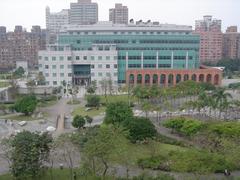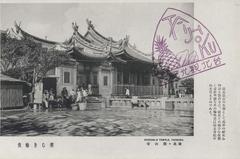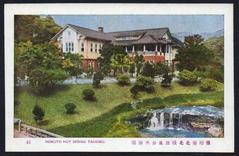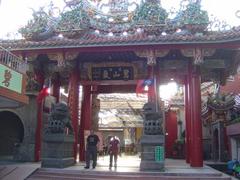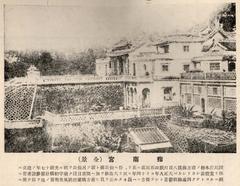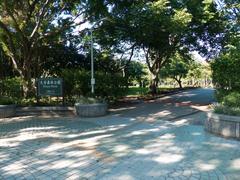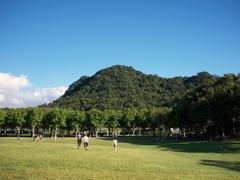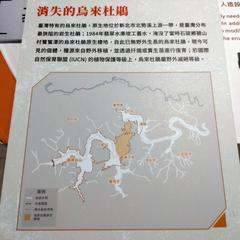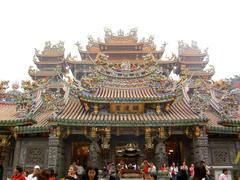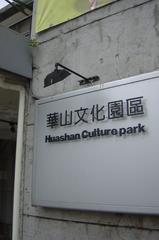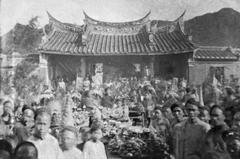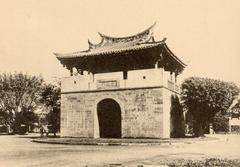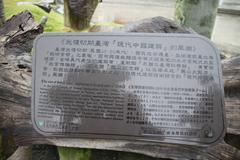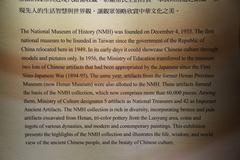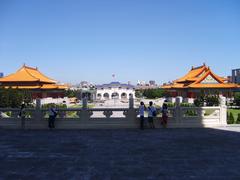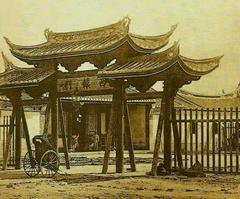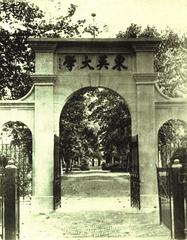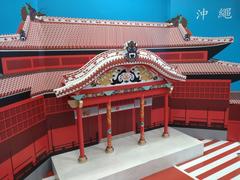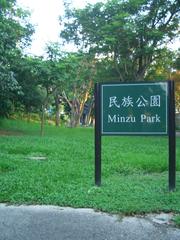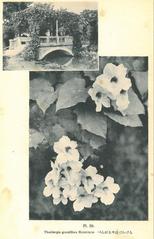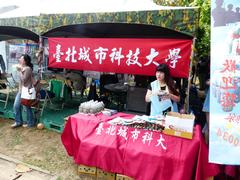Comprehensive Guide to Visiting Xianjiyan Trail, Taipei, Taiwan
Date: 24/07/2024
Introduction
Nestled in the bustling city of Taipei, Taiwan, the Xianjiyan Trail, also known as 仙跡岩觀山步道, offers not just a hiking route but a journey through centuries of history and culture. Its name, “Xianjiyan,” which translates to “Immortal’s Footprint Rock,” hints at its deep-rooted cultural and historical importance. The trail is a historically significant pathway believed to have been used for centuries, serving both spiritual and physical connections within Taipei. Along the trail, hikers encounter temples, including the notable Xianjiyan Temple, which reflects the syncretic nature of Taiwanese religious practices. These temples and various pavilions along the trail enhance the cultural experience and provide panoramic views of Taipei, blending natural and urban environments seamlessly (4corners7seas). The trail also holds significance for its biodiversity, offering a haven for nature lovers and birdwatchers alike, with species such as the Taiwan Barbet and Black Bulbul frequently spotted (Taiwan Trails and Tales). This guide aims to provide comprehensive coverage on the trail’s history, cultural significance, visitor information, and tips to ensure a memorable hiking experience.
Table of Contents
- [History and Significance of Xianjiyan Trail](#history-and-significance-of-xianjiyan-trailhistory-and-significance-of-xianjiyan-trail)
- [Historical Background](#historical-backgroundhistorical-background)
- [Cultural Significance](#cultural-significancecultural-significance)
- [Architectural Highlights](#architectural-highlightsarchitectural-highlights)
- [Natural and Urban Integration](#natural-and-urban-integrationnatural-and-urban-integration)
- [Historical Events and Anecdotes](#historical-events-and-anecdoteshistorical-events-and-anecdotes)
- [Modern-Day Relevance](#modern-day-relevancemodern-day-relevance)
- [Visitor Information](#visitor-informationvisitor-information)
- [Ticket Prices](#ticket-pricesticket-prices)
- [Visiting Hours](#visiting-hoursvisiting-hours)
- [Accessibility](#accessibilityaccessibility)
- [Environmental and Social Impact](#environmental-and-social-impactenvironmental-and-social-impact)
- [Future Prospects](#future-prospectsfuture-prospects)
- [FAQ](#faqfaq)
- [Visitor Tips](#visitor-tipsvisitor-tips)
- [Best Time to Visit](#best-time-to-visitbest-time-to-visit)
- [What to Bring](#what-to-bringwhat-to-bring)
- [Safety Precautions](#safety-precautionssafety-precautions)
- [Getting There](#getting-theregetting-there)
- [Trail Difficulty and Duration](#trail-difficulty-and-durationtrail-difficulty-and-duration)
- [Points of Interest](#points-of-interestpoints-of-interest)
- [Nearby Attractions](#nearby-attractionsnearby-attractions)
- [Local Etiquette](#local-etiquettelocal-etiquette)
- [Photography Tips](#photography-tipsphotography-tips)
- [Local Amenities](#local-amenitieslocal-amenities)
- [Special Events and Guided Tours](#special-events-and-guided-toursspecial-events-and-guided-tours)
History and Significance of Xianjiyan Trail
Historical Background
The Xianjiyan Trail is a historically significant hiking route believed to have been used for centuries, serving as a spiritual and physical pathway connecting various parts of Taipei. The trail’s deep connection to Taiwan’s past makes it a vital cultural asset.
Cultural Significance
The trail is dotted with several temples and religious sites, the most notable being the Xianjiyan Temple. This temple is a focal point of the trail and is dedicated to various deities, reflecting the syncretic nature of Taiwanese religious practices, which often blend elements of Buddhism, Taoism, and local folk beliefs. The temple serves as a place of worship and a cultural landmark, attracting both locals and tourists who seek spiritual solace and cultural enrichment.
Architectural Highlights
One of the architectural highlights along the trail is the series of pavilions and rest areas that offer panoramic views of Taipei. These structures are not only functional, providing shade and rest for hikers, but also aesthetically pleasing, often designed in traditional Chinese architectural styles. The pavilions are strategically placed to offer the best views of the cityscape, including iconic landmarks like Taipei 101.
Natural and Urban Integration
The Xianjiyan Trail is a testament to the harmonious integration of natural and urban environments. Despite being located within the city limits, the trail offers a serene escape into nature. The trail’s design incorporates natural elements such as stone steps and wooden pathways, which blend seamlessly with the surrounding flora. This integration is a reflection of Taiwan’s broader environmental ethos, which emphasizes the preservation of natural landscapes even within urban settings.
Historical Events and Anecdotes
The trail has been the backdrop for various historical events and local anecdotes. For instance, the Xinhai Tunnel, visible from certain points on the trail, is reputed to be one of the most haunted places in Taiwan. This tunnel, which lies beneath a green mound visible from the trail, is surrounded by numerous graves, adding to its eerie reputation. Local folklore suggests that the spirits of construction workers who perished during the tunnel’s construction still roam the area, adding a layer of mystique to the trail.
Modern-Day Relevance
In contemporary times, the Xianjiyan Trail has gained popularity as a recreational spot for both locals and tourists. Its accessibility via public transport, with trailheads near Wanlong Station on the green MRT line and Wanfang Hospital Station on the brown MRT line, makes it a convenient option for a quick hike. The trail’s moderate difficulty level, with a total elevation gain of about 115 meters, makes it suitable for hikers of all ages and fitness levels.
Visitor Information
Ticket Prices
The Xianjiyan Trail is free to access, making it an affordable recreational option for everyone.
Visiting Hours
The trail is open 24 hours a day, allowing hikers the flexibility to visit at their convenience. However, it is recommended to hike during daylight hours for safety reasons.
Accessibility
The trailheads are easily accessible via public transport. Wanlong Station on the green MRT line and Wanfang Hospital Station on the brown MRT line are the nearest stations. The trail is well-maintained and suitable for hikers of all ages and fitness levels.
Environmental and Social Impact
The trail also plays a significant role in promoting environmental awareness and social well-being. Regular maintenance and community involvement in preserving the trail ensure that it remains a clean and safe environment for all visitors. The trail’s popularity has also spurred local businesses, such as shops and eateries near the trailheads, contributing to the local economy.
Future Prospects
Looking ahead, the Xianjiyan Trail is poised to continue its role as a vital recreational and cultural asset for Taipei. Ongoing efforts to enhance the trail’s infrastructure, such as improved signage and rest areas, aim to make it even more accessible and enjoyable for visitors. Additionally, initiatives to promote the trail’s historical and cultural significance are expected to attract more tourists, further cementing its status as a must-visit destination in Taipei.
FAQ
What are the Xianjiyan Trail’s visiting hours?
The trail is open 24 hours a day, though hiking during daylight hours is recommended for safety.
Is the Xianjiyan Trail suitable for beginners?
Yes, the trail’s moderate difficulty level and well-maintained paths make it suitable for hikers of all ages and fitness levels.
How do I get to the Xianjiyan Trail?
You can reach the trailheads via public transport. The nearest stations are Wanlong Station on the green MRT line and Wanfang Hospital Station on the brown MRT line.
Visitor Tips
Best Time to Visit
The best time to visit the Xianjiyan Trail is during the cooler months from October to March. During this period, the weather is more conducive to hiking, with temperatures ranging from 15°C to 25°C. The trail can become quite humid and slippery during the summer months, so it is advisable to avoid visiting during this time.
What to Bring
- Water and Snacks: There are no facilities along the trail, so it is essential to bring enough water and snacks to stay hydrated and energized.
- Proper Footwear: The trail can be uneven and rocky in some sections, so sturdy hiking shoes are recommended.
- Sun Protection: Even though the trail is shaded in many parts, it is advisable to bring sunscreen and a hat to protect against UV rays.
- Insect Repellent: The trail is home to various insects, including mosquitoes, so insect repellent is a must.
Safety Precautions
- Stay on the Path: To protect the natural environment and for your safety, it is crucial to stay on the designated trail.
- Weather Check: Always check the weather forecast before heading out, as the trail can become hazardous during heavy rain.
- Emergency Contacts: Make sure to have local emergency contact numbers saved on your phone.
Getting There
The Xianjiyan Trail is accessible via public transportation. Visitors can take the Taipei Metro to the Jingmei Station and then transfer to a local bus that stops near the trailhead. For those driving, there is limited parking available near the entrance. The trail is well-marked with signs in both Chinese and English, making it easy for international visitors to navigate.
Trail Difficulty and Duration
The Xianjiyan Trail is considered a moderate hike, suitable for hikers of all skill levels, including families with children. The trail is well-maintained, with clear signage and steps in steeper sections. The entire hike takes approximately 1.5 to 2 hours to complete, depending on your pace and the number of stops you make to enjoy the scenery.
Points of Interest
- Scenic Views: The Xianjiyan Trail offers stunning panoramic views of Taipei City and the surrounding mountains. The best viewpoints are marked along the trail, providing excellent photo opportunities.
- Flora and Fauna: The trail is rich in biodiversity, with a variety of plant species and occasional sightings of birds and small mammals. Keep an eye out for the vibrant flowers and lush greenery.
- Historical Sites: Along the trail, you will come across several historical markers and remnants of old structures, providing a glimpse into the area’s past.
Nearby Attractions
- Zhinan Temple: Located a short distance from the Xianjiyan Trail, Zhinan Temple is a beautiful Taoist temple with intricate architecture and serene surroundings. It is worth a visit before or after your hike. (Zhinan Temple)
- Maokong Gondola: For a unique experience, take a ride on the Maokong Gondola, which offers breathtaking views of the Taipei skyline and the lush mountains. The gondola station is easily accessible from the trail. (Maokong Gondola)
Local Etiquette
- Respect Nature: Follow the Leave No Trace principles by carrying out all trash and minimizing your impact on the environment.
- Quiet Enjoyment: Keep noise levels down to preserve the tranquility of the trail and respect other hikers.
- Cultural Sensitivity: If you encounter any local religious or cultural sites along the trail, be respectful and follow any posted guidelines.
Photography Tips
- Golden Hour: The best times for photography are during the golden hours, shortly after sunrise and before sunset, when the lighting is soft and warm.
- Wide-Angle Lens: A wide-angle lens is ideal for capturing the expansive views and lush landscapes along the trail.
- Tripod: Bring a lightweight tripod for steady shots, especially if you plan to take long-exposure photos of the scenery.
Local Amenities
- Restrooms: Public restrooms are available near the trailhead and at certain points along the trail.
- Food and Drink: There are several convenience stores and local eateries near the trail entrance where you can purchase snacks and drinks before your hike.
- Parking: Limited parking is available near the trailhead. It is recommended to use public transportation to avoid parking difficulties.
Special Events and Guided Tours
- Guided Tours: Occasionally, guided tours are offered by local hiking groups or tourism organizations. Check online community boards or local tourism websites for more information.
- Special Events: The trail sometimes hosts special events such as nature walks or historical tours. Be sure to check for any upcoming events that may enhance your visit.
FAQ
Is the Xianjiyan Trail family-friendly?
Yes, the trail is suitable for families, including those with children. It is a moderate hike with well-maintained paths.
What are the best times to visit the Xianjiyan Trail?
The best times to visit are during the spring (March to May) and autumn (September to November) when the weather is mild and the scenery is vibrant.
Are there any fees to access the Xianjiyan Trail?
No, there are no entrance fees for the trail.
What should I bring for the hike?
Wear comfortable clothing and sturdy shoes, bring sun protection, water, snacks, and rain gear if the weather forecast suggests rain.
Conclusion
The Xianjiyan Trail stands as a testament to Taipei’s rich cultural and historical tapestry, offering a unique blend of natural beauty and urban convenience. Its historical significance, marked by the presence of temples and architectural highlights, makes it a vital cultural asset. Accessible year-round and suitable for hikers of all skill levels, the trail’s moderate difficulty and well-maintained paths ensure an enjoyable experience for everyone. The trail’s commitment to environmental conservation and community involvement underscores its importance to both local residents and tourists. As efforts continue to enhance its infrastructure and promote its historical and cultural significance, the Xianjiyan Trail is poised to remain a beloved recreational and cultural destination in Taipei. Whether you are seeking spiritual solace, cultural enrichment, or simply a refreshing hike, the Xianjiyan Trail offers something for every visitor (Wanderlog). For more detailed information and latest updates, be sure to check out related posts and follow on social media platforms.
